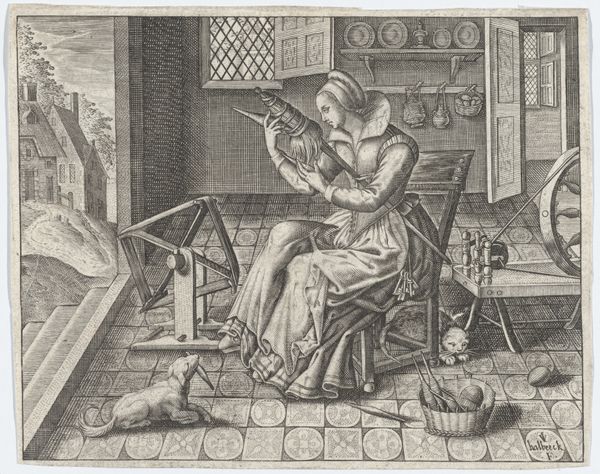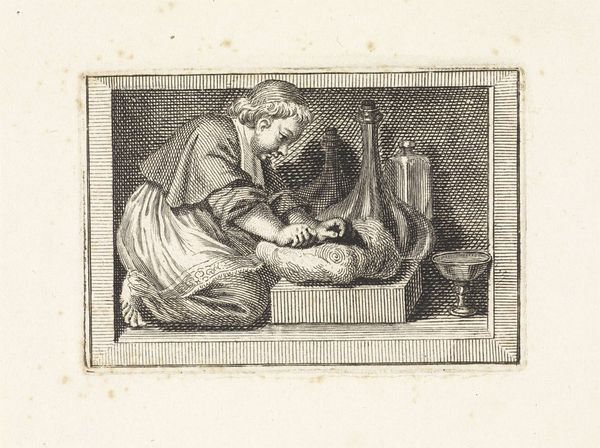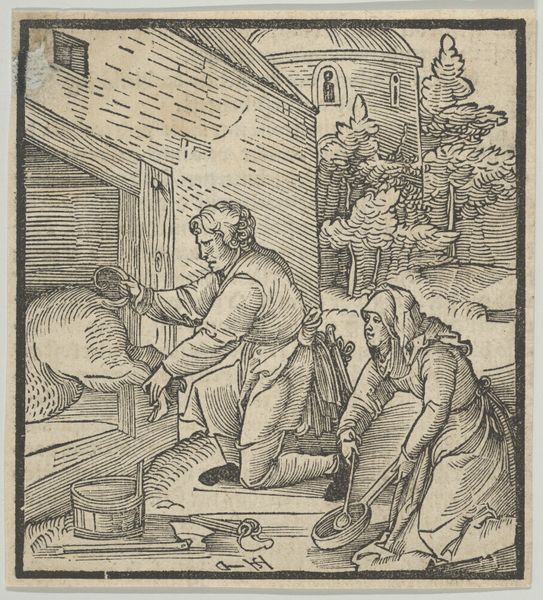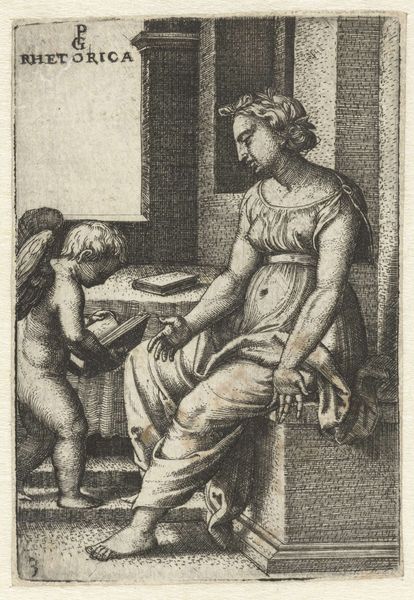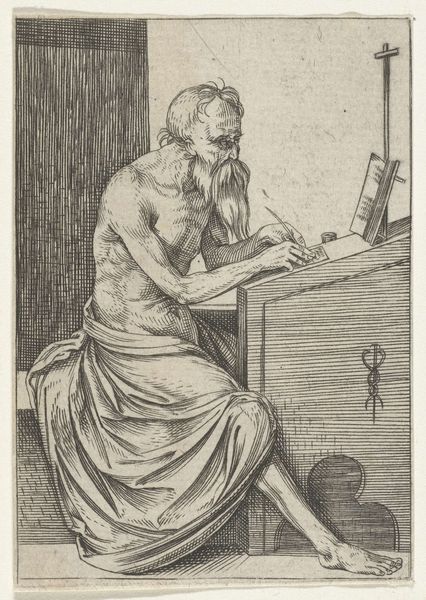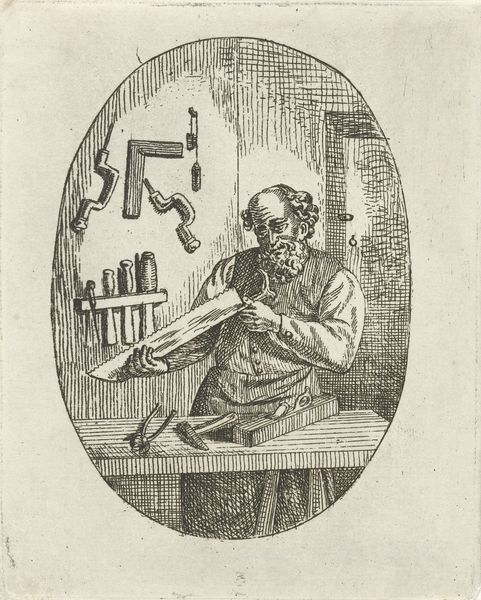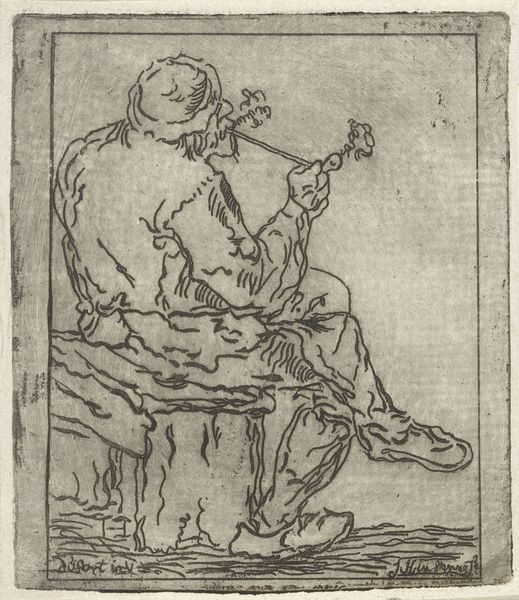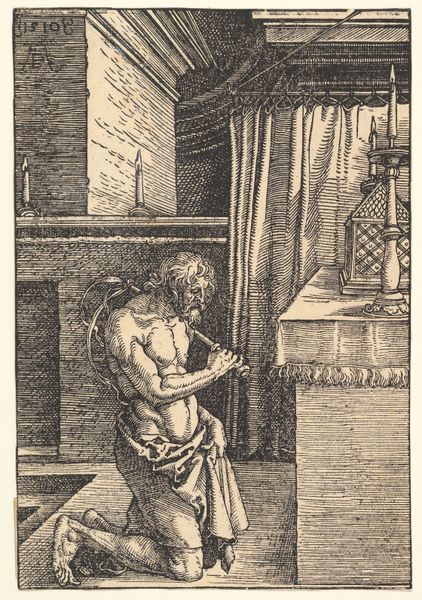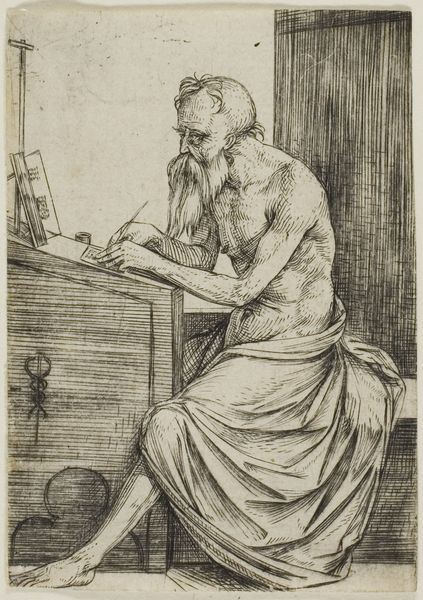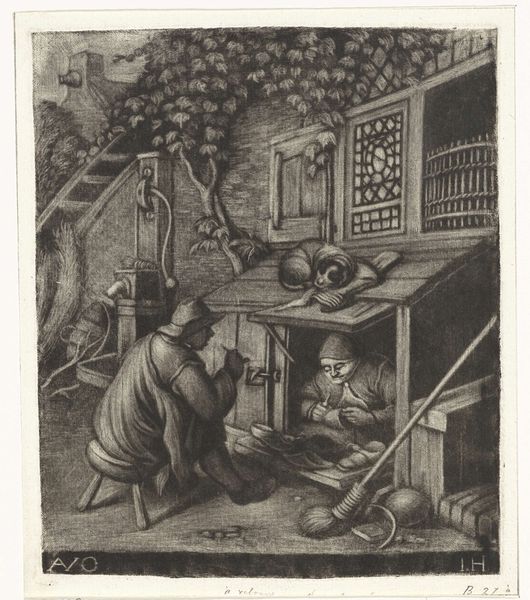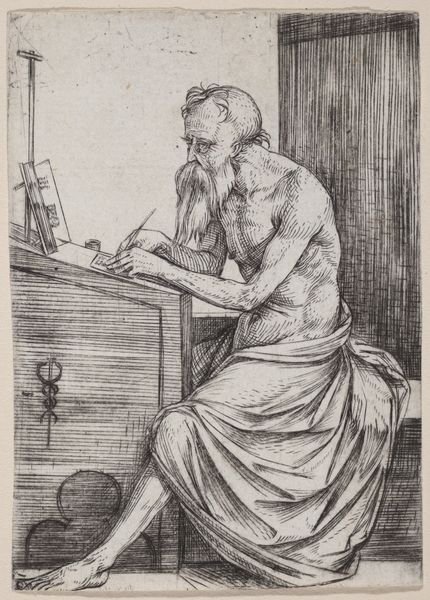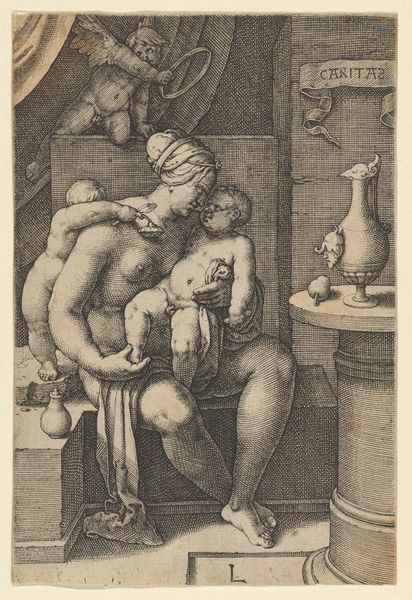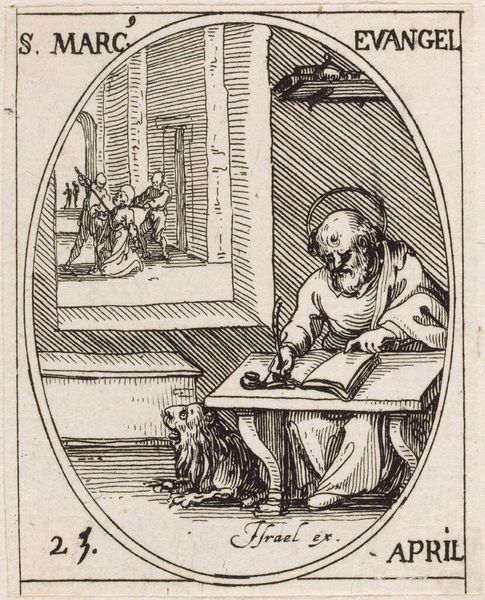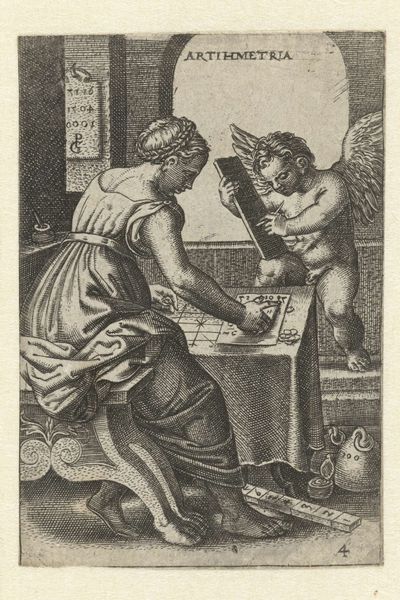
drawing, print, engraving
#
drawing
#
allegory
# print
#
mannerism
#
genre-painting
#
nude
#
engraving
Dimensions: Sheet (trimmed at bottom): 2 15/16 × 2 1/16 in. (7.4 × 5.2 cm)
Copyright: Public Domain
Curator: This is Georg Pencz's "Touch (Tactus), from "The Five Senses," created between 1539 and 1549. The work, rendered in engraving, is currently housed here at The Met. Editor: Immediately, the subject's composed posture and the stillness within the domestic interior evokes a concentrated, almost meditative mood, which really plays on the viewer's sense of calmness. Curator: Yes, and structurally, Pencz employs a sophisticated arrangement of forms. The way the lines create textures is very deliberate, creating tonal modulations with dense hatching for shadows and finer lines where there's more light, all serving to give dimension to the figure. We must recognize here how, during this time, the personification of senses was en vogue in Mannerist printmaking. Editor: Exactly, and notice how Pencz plays on the idea of “touch” – her action focuses on this sense. You see this semi-nude woman diligently weaving at her loom while a spider constructs its intricate web behind her. One can draw analogies here about creation and touch from two different societal levels – a human, with divine intervention, and a beast simply completing its work from an instinctual mode. Curator: Interesting reading. One must consider too the conventions around female representation during this period. It appears that he’s really exploring these dynamics. Note the deliberate way that he contrasts soft curves with the stark architecture in the background; an exercise of Mannerism. Editor: But isn't there a contradiction there, then? The spiderweb symbolizes a "handicraft," suggesting labor, traditionally done by women. Does that association change anything about how one might interpret her "power"? Does the nude then take a twist? The gaze is everything, I think. Curator: Yes, it could very well shift depending on how it is examined; her partial nudity, alongside the labor symbolism, places her in the canon of other mythological or allegorical nudes— a visual strategy that imbued works with virtue. Editor: I see her as representing more than a sense; more as an embodiment of skill and creation itself – a subtle act of weaving new life, if you will. I am grateful for works like this that are preserved so everyone can witness the touch and artistic legacy of the past. Curator: Precisely, a detailed piece providing a nuanced view of not only artistic technique but also of social values during the period. I trust that viewers will engage and feel their own perspective enhanced!
Comments
No comments
Be the first to comment and join the conversation on the ultimate creative platform.
